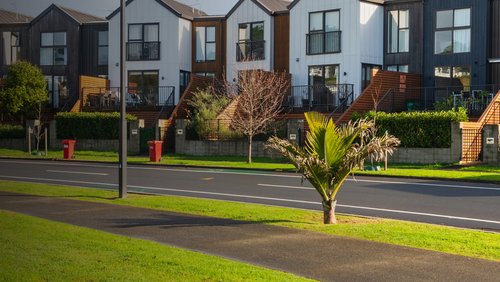23 Sep 2020
How successful was work to secure unreinforced masonry buildings after the Kaikoura earthquake?
Following the Kaikoura earthquake in 2016, the Government introduced a requirement to secure unreinforced masonry facades on buildings in certain areas of Wellington City, Hutt City, Marlborough District and Hurunui District Councils.
According to a recently published review, this programme was successful because of its people-centred approach that guided building-owners through the process. The review also found that more needed to be done to support engineers and manage their liability where there was reduced building consent oversight.
Following the Kaikōura earthquake in 2016, seismic modelling showed that some regions in the upper South Island and lower North Island were at heightened seismic risk due to the potential for a substantial aftershock to occur in the next 18 months.
Engineering New Zealand and relevant technical groups, spearheaded by then-NZSEE president Peter Smith, encouraged the Government to take action. The Hurunui/Kaikōura Earthquakes Recovery (Unreinforced Masonry Buildings) Order 2017 (URM Order) required work be undertaken to secure the facades of street facing buildings in the affected local body areas. The URM Securing Fund (Fund) provided financial assistance for building owners to complete the work.
In total, 114 buildings were secured and/or strengthened, and four buildings were demolished. $3.08 million was paid out in subsidies, about a third of the total cost.
The independent post-implementation review of the programme was commissioned by MBIE. It provides useful insight into what enabled the programme’s success, as well as learnings that could be applied to future strengthening programmes.
Sticks and carrots alone are not enough
The URM Order and Securing Fund mixed enforcement with assistance. Councils had the power to prosecute in the case of non-compliance, the tight timeframe signalled the urgency of the work, and the Securing Fund was available to help building owners offset the costs. Where certain criteria were met, the need for building and resource consents for the securing work were relaxed.
The review reveals the unanticipated challenges of getting buildings across the line. Working closely with building owners to guide them through the process was essential to the success of the programme and more effective than any number of sticks and carrots alone.
The design of the policy had not anticipated some of the barriers building owners would face. After an initial slow uptake, Wellington City and Hutt City Councils took a more hands-on project management approach to help building owners through. Unlike commercial owners, owners of smaller buildings often did not have the knowledge, capacity or capability to project manage the work themselves. Owners of buildings with a body corporate and community owned facilities also faced extra challenges with decision-making often time consuming and difficult.
Engineers also needed support
But it was not just building owners who needed support. Engineers too, faced challenges on this project. The reduced building consent oversight raised liability concerns. To offset this, Hutt City and Wellington City Councils reviewed engineering calculations done by the design engineer. For future projects, the review suggests the establishment of an independent review panel or pool of engineers to review securing designs.
MBIE ran workshops and produced a technical guidance document. This assistance was valuable but did not answer all the questions that engineers had. Again, it was personalised independent advice that was needed to clear some of the hurdles. Engineering New Zealand developed a programme to provide independent facilitation. The report also recommends that for future programmes a person at MBIE be available to answer technical questions and give advice.
Finding the right model for future seismic strengthening projects
The review also raised wider considerations pertinent to any future seismic strengthening projects.
The URM Order was quite tightly focused on remedying the immediate public safety risk posed by unsecured facades and for the most part considered buildings individually. However, the review concluded that taking a precinct level approach would have been more efficient and would also have reduced the cost of assessments where notices were revoked.
If we take away any lessons from this project it should be that working together is in everyone’s best interest. With councils’ project management oversight and technical support from Engineering New Zealand and MBIE, building owners and engineers could feel supported and both challenges and solutions could be shared.
Councils may require building owners to strengthen, but without engineers willing to take on this type of work, these projects will be a challenge. What other models of support and coordinated approaches to strengthening projects would you like to see that would make such work both attractive and satisfying?





